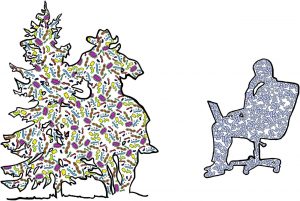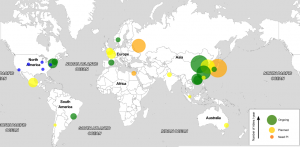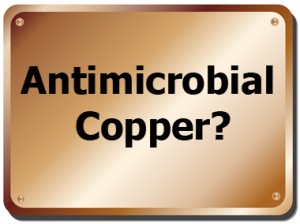These will almost certainly be of interest to the MoBE community. There is a new paper in mSystems “Geography and Location Are the Primary Drivers of Office Microbiome Composition” by John Chase, Jennifer Fouquier, Mahnaz Zare, Derek L. Sonderegger, Rob Knight, Scott T. Kelley, Jeffrey Siegel, J. Gregory Caporaso. I found out about the paper via …
Sloan has just renewed our funding to build on our foundational research at Virginia Tech that has established general factors broadly shaping the composition of the premise plumbing microbiome! In this next phase we will focus on shifts in water chemistry and temperature, using brain-eating amoebae as a key exemplar (need to protect those brains!). …
Guest post by Melina Bautista (@qmbautista) and Ameet J. Pinto (@watermicrobe). The provision of safe drinking water relies primarily on disinfection as a cornerstone for pathogen control. Since its full-scale implementation in the early 20th century, it has become the standard final treatment step to inactivate microorganisms in most drinking water treatment plants around …
Our latest Project MERCCURI paper came out last week and so I figured I’d do a quick post about it here since it’s a good fit for the microbiology of the built environment. In short, we collected a number of bacterial strains from built environments on earth and sent them to the space station to …
One afternoon while making my way through another DNA extraction, I was eavesdropping over the lab benches, per usual, trying to keep my mind occupied. I overheard my project manager and another undergraduate discussing an unusual project. “Do you want to contact the Sacramento authorities to get clearance to swab the light rail, because talking …
Last night, the premiere of a PBS series on the built environment aired. It is a three part series that will cover “10 Homes that Changed America,” then the equivalent for parks and towns. Apparently, this stemmed from a similar series on buildings that aired several years ago. More on the series and what will …
Much discussed among microbiogists have been various scenes from the book and film (both excellent), “The Martian”. In short, the protagonist mixes some earth soil, some human feces, and some Martian soil to grow potatoes on Mars. Would this work? Is the feces required? Would you get sick? Are the microbes even needed for plant …
There is a wonderfully essay by Tal Abbady coming out in tomorrow’s New York Times (and available online now). A few years in Spain, and my mother’s last days, helped me see the futility of a sterilized life. Source: Less Disinfectant, More Rioja The essay is about many things, including differences between cultures (pun intended …
This really made my day / week / month. Marc Edwards has been selected as one of Fortune Magazine’s “World’s Greatest Leaders”. Source: Marc Edwards Here’s what they wrote about him Edwards, a MacArthur “genius” grant recipient, is one of the nation’s top experts on water contamination–and nowhere has his impact been bigger than in …
Interesting article addressing the risks of using copper in human structures for its antimicrobial qualities. Copper resistant bacteria could prove to be a risk for human health, as certain parts of the human immune system (notably macrophages) utilize it to dispatch potentially dangerous microbes. While many places use copper as a safety measure against harmful …







